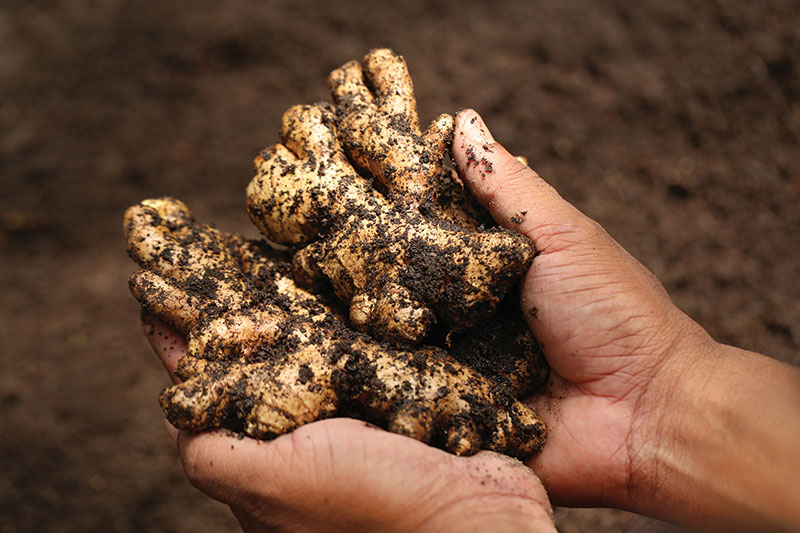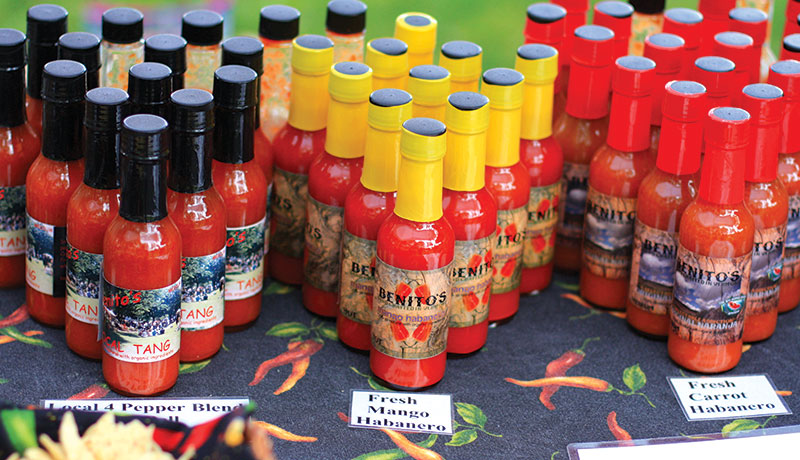
It’s true that your customers will always look for classic fresh strawberries or tomatoes every season, yet savvy farmers follow larger national food trends to keep their business models and product lines fresh and profitable. From hops to alternative farmers markets, fermented foods to foraged mushrooms, ample opportunity abounds for the farmer who thinks beyond the typical CSA and toward the future.
“As the market for local and organic foods continues to grow and diversify, small-scale farmers stand ready to reap the benefits,” explains Ali Berlow, food authority and author of The Food Activist Handbook: Big & small things you can do to help provide fresh, healthy food for your community. “The key is to look around your community food system and then experiment with marketing and products that complement your existing business. Ideally, don’t take on large investments right off. Seek small steps and means, which either adds sales to your already loyal customer base or that brings new business your way.”
Spice It Up with Ginger

The oldest thing is sometimes new again. Such is the case with ginger, a flowering perennial whose rhizome, or root, has been used for centuries in various parts of Asia and, as of late, other part of the world for medicinal and culinary properties. The ginger flavor blends a distinct combination of citrus zest with earthy and musty notes. It’s a bold taste that pairs well with other flavors, used in foods as disparate as jams and teas.
The annual National Restaurant Association Show provides a taste of America’s palate and food trends in any given year, and ginger reigned in 2017. Three of the recipients of the 2017 Food and Beverage Awards, celebrating the best in new food products, were beverages featuring ginger.
Fermented Foods: Think Past Kraut
Other ancient foods hot among health-conscious consumers and hardcore local foodies alike are fermented foods, products such as sauerkraut that naturally provide probiotics. True, the fermentation boom has grown among food trends for several years, so it’s time to ask what’s next beyond the expected pickle.
“I think fermented hot sauce is a wonderful value-added product for farmers to think about making,” advises David Klingenberger (pictured above), founder and chief fermenting officer at The Brinery in Ann Arbor, Michigan. Klingenberger exemplifies the convivial, collaborative mindset of the food and farming entrepreneur community, sharing ideas and personal experiences. The Brinery produces four hot sauces with unexpected twists such as Verde Solanales, featuring the tartness of early summer’s fresh picked green peppers.
“I also see probiotic beverages on the rise,” he says.
For example, this could mean using your farm-raised fruits in a water kefir, a naturally carbonated, probiotic beverage made from kefir grains.

A bonus: Under many state cottage food laws, hot sauce can be produced in your home kitchen and sold because it qualifies as a high-acid food. You will lose the fermented properties once the product is canned. However, it’s still an easy, cost-effective means to showcase the flavor profile before getting into commercial, refrigerated production, which fermented foods would require.
Build Agritourism into Your Business Model

Hosting farm tours and adding an agritourism component to your farm business typically happens after a farm is up and running as a means to diversify and add income. The farm-to-table and local food movements continue to grow among food trends, and more people are interested in on-farm activities, so you can make agritourism the centerpiece of your plan from the start. Build your reputation for your products alongside delivering memorable, farm-based experiences.
Rachael and Jesse Johnson, farmers and owners of Door County Creamery in Sister Bay, Wisconsin, did exactly that when they launched their cheese-making operation by building a café and retail front in town, just a few miles from the goat farm and milking parlor. Their farm lunch tours take guests from “goat to gelato,” providing a behind-the-scenes and personal experience of the full operation, including a finale lunch at the café. Tour guests also receive a discount coupon to linger and shop at the store.
Expand Beyond the Farmers Market
Why limit yourself to selling at a farmers market? Instead, take your farm stand directly to the cool spots where your best customers knowledgeable in food trends hang out already. Stepheni Norton of Dickinson Farm in National City, California, found hipsters hanging out at ChuckAlek Biergarten, a local independent brewery, so this small urban organic farm just down the coast from San Diego now runs what has been called the “Tiniest Farmers Market” in San Diego on Tuesday nights.
“This informal, laid-back setting proves to be the ideal opportunity to really engage with and talk to potential customers about my farm and answer questions,” Norton says. “Importantly, the types of people seeking out local beer are also in the market for organic produce. It’s a win-win, too, for the brewery as my farm market stand adds interest and value on a typically slower Tuesday evening at no cost to them.”
Forage & Sell the Wild

What’s an add-on farm income potential that doesn’t require additional investment or conflict with the crops or livestock you’re already raising? Think wild foraged when you think of food trends.
“First and foremost, realize it will be an ongoing, self-education process to really understand and accurately identify wild products such as mushrooms,” says Brett Olson, creative director at Renewing the Countryside, a nonprofit that champions innovations in rural businesses. “Connect with other foragers in your area, and find a mentor who can help you with identification, along with a field guide and an online group where you can post a photo to help with classification. Also, check if your state requires a license for wild harvesting and selling.”
More than mushroom are available to wild forage, including ramps (see the Cutting-Edge Crops column on page 14) in the spring and berries in the summer. Are your local customers perhaps not as ambitious to try the more obscure wild items? Try connecting with urban chefs who might seek unusual items and love the idea of working with you as their wild forager.
Hop on Hops

Small and independent craft brewers are a growing sector in food trends; they represent more than 12 percent market share by volume of the beer industry, according to the Brewers Association, a trade group. With more than 800 new craft breweries opening in 2016 alone, demand continues for locally raised hops, the cone-shaped flower that contributes to the bitter taste of beer.
“The future of hops is being written as regional, and small-scale growers are bringing new alternatives to traditional commercial hops for adventurous and locally minded brewers,” says Eric Sannurud, farmer and owner of Mighty Axe Hops, which raises hops for local breweries in Minnesota. “For a farmer curious about growing hops, I’d recommend starting very small. Try out 20 plants and see how they do. … Despite the gold rush feeling in craft beer, a successful hops enterprise has to be patient, as hops are a perennial crop that can take two to three seasons for full yield.”
Embrace Convenience
With our increasingly time-strapped society, offering convenience through options for customers to use your product while saving time in the kitchen is among food trends that undoubtedly will be around for a while. How can you then take what you currently successfully produce and create an easy-to-use product that fills a need for your customers?
For example, Anna Landmark and Anna Thomas Bates of Landmark Creamery found the answer in fondue. This award-winning, small-scale cheese-making operation in southern Wisconsin saw an opportunity to create a fondue kit that packaged two existing cheeses—Anabasque and Pipit—along with some flavorings and flour.
“Fondue is one of those items that can be complicated and intimidating to make,” Landmark says. “Our product is all preshredded so you just empty the bag into your pot [and] add a cup of wine, and you’re good to go. It definitely helps boost our holiday and winter sales as that’s when people crave a dish like this.”
The slower winter months provide the perfect time to research, dream, test and taste ideas. Try some of the trends in this article or find or start others. Being on top of food trends will keep your farm thriving and a step ahead of your competition.
This story originally appeared in the January/February 2018 issue of Hobby Farms.




